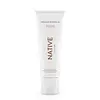What's inside
What's inside
 Key Ingredients
Key Ingredients

No key ingredients
 Benefits
Benefits

 Concerns
Concerns

 Ingredients Side-by-side
Ingredients Side-by-side

Water
Skin ConditioningButylene Glycol
HumectantCaprylic/Capric Triglyceride
MaskingDimethicone
EmollientEthylhexyl Palmitate
EmollientTriethylhexanoin
MaskingBehenyl Behenate
EmollientCetyl Alcohol
EmollientGlycerin
HumectantPanthenol
Skin ConditioningBis-Diglyceryl Polyacyladipate-1
EmollientButyrospermum Parkii Butter
Skin ConditioningCetearyl Alcohol
EmollientGlyceryl Stearate
EmollientCitrus Aurantium Bergamia Fruit Oil
MaskingPotassium Cetyl Phosphate
Emulsifying1,2-Hexanediol
Skin ConditioningCaprylyl Glycol
EmollientHydrogenated Palm Glyceride
EmollientCitrus Aurantium Dulcis Peel Oil
MaskingCitrus Limon Peel Oil
MaskingCitrus Paradisi Peel Oil
MaskingAcrylates/C10-30 Alkyl Acrylate Crosspolymer
Emulsion StabilisingSodium Phytate
Sodium Hydroxide
BufferingSodium PCA
HumectantXanthan Gum
EmulsifyingCitrus Aurantium Dulcis Flower Oil
AstringentCitrus Nobilis Peel Oil
MaskingCitrus Tangerina Peel Oil
MaskingAvena Sativa Bran Extract
AbrasiveLeuconostoc/Radish Root Ferment Filtrate
AntimicrobialWater, Butylene Glycol, Caprylic/Capric Triglyceride, Dimethicone, Ethylhexyl Palmitate, Triethylhexanoin, Behenyl Behenate, Cetyl Alcohol, Glycerin, Panthenol, Bis-Diglyceryl Polyacyladipate-1, Butyrospermum Parkii Butter, Cetearyl Alcohol, Glyceryl Stearate, Citrus Aurantium Bergamia Fruit Oil, Potassium Cetyl Phosphate, 1,2-Hexanediol, Caprylyl Glycol, Hydrogenated Palm Glyceride, Citrus Aurantium Dulcis Peel Oil, Citrus Limon Peel Oil, Citrus Paradisi Peel Oil, Acrylates/C10-30 Alkyl Acrylate Crosspolymer, Sodium Phytate, Sodium Hydroxide, Sodium PCA, Xanthan Gum, Citrus Aurantium Dulcis Flower Oil, Citrus Nobilis Peel Oil, Citrus Tangerina Peel Oil, Avena Sativa Bran Extract, Leuconostoc/Radish Root Ferment Filtrate
Water
Skin ConditioningCaprylic/Capric Triglyceride
MaskingGlycerin
HumectantGlyceryl Stearate Se
EmulsifyingCetearyl Alcohol
EmollientSqualane
EmollientCetyl Alcohol
EmollientParfum
MaskingBenzyl Alcohol
PerfumingCitric Acid
BufferingEthylhexylglycerin
Skin ConditioningPotassium Sorbate
PreservativeSodium Benzoate
MaskingSodium PCA
HumectantXanthan Gum
EmulsifyingAloe Barbadensis Leaf Juice
Skin ConditioningIngredients Explained
These ingredients are found in both products.
Ingredients higher up in an ingredient list are typically present in a larger amount.
This ingredient is an emollient, solvent, and texture enhancer. It is considered a skin-softener by helping the skin prevent moisture loss.
It helps thicken a product's formula and makes it easier to spread by dissolving clumping compounds.
Caprylic Triglyceride is made by combining glycerin with coconut oil, forming a clear liquid.
While there is an assumption Caprylic Triglyceride can clog pores due to it being derived from coconut oil, there is no research supporting this.
Learn more about Caprylic/Capric TriglycerideCetearyl alcohol is a mixture of two fatty alcohols: cetyl alcohol and stearyl alcohol. It is mainly used as an emulsifier. Emulsifiers help prevent the separation of oils and products. Due to its composition, it can also be used to thicken a product or help create foam.
Cetearyl alcohol is an emollient. Emollients help soothe and hydrate the skin by trapping moisture.
Studies show Cetearyl alcohol is non-toxic and non-irritating. The FDA allows products labeled "alcohol-free" to have fatty alcohols.
This ingredient is usually derived from plant oils such as palm, vegetable, or coconut oils. There is debate on whether this ingredient will cause acne.
Due to the fatty acid base, this ingredient may not be Malassezia folliculitis safe.
Learn more about Cetearyl AlcoholCetyl Alcohol is a fatty alcohol. Fatty Alcohols are most often used as an emollient or to thicken a product.
Its main roles are:
Though it has "alcohol" in the name, it is not related to denatured alcohol or ethyl alcohol.
The FDA allows products labeled "alcohol-free" to have fatty alcohols.
Learn more about Cetyl AlcoholGlycerin is already naturally found in your skin. It helps moisturize and protect your skin.
A study from 2016 found glycerin to be more effective as a humectant than AHAs and hyaluronic acid.
As a humectant, it helps the skin stay hydrated by pulling moisture to your skin. The low molecular weight of glycerin allows it to pull moisture into the deeper layers of your skin.
Hydrated skin improves your skin barrier; Your skin barrier helps protect against irritants and bacteria.
Glycerin has also been found to have antimicrobial and antiviral properties. Due to these properties, glycerin is often used in wound and burn treatments.
In cosmetics, glycerin is usually derived from plants such as soybean or palm. However, it can also be sourced from animals, such as tallow or animal fat.
This ingredient is organic, colorless, odorless, and non-toxic.
Glycerin is the name for this ingredient in American English. British English uses Glycerol/Glycerine.
Learn more about GlycerinSodium PCA is the sodium salt of pyroglutamic acid. It is naturally occurring in our skin's natural moisturizing factors where it works to maintain hydration.
The PCA stands for pyrrolidone carboxylic acid, a natural amino acid derivative.
This ingredient has skin conditioning, anti-inflammatory, and humectant properties. Humectants help hydrate your skin by drawing moisture from the air. This helps keep your skin moisturized.
Learn more about Sodium PCAWater. It's the most common cosmetic ingredient of all. You'll usually see it at the top of ingredient lists, meaning that it makes up the largest part of the product.
So why is it so popular? Water most often acts as a solvent - this means that it helps dissolve other ingredients into the formulation.
You'll also recognize water as that liquid we all need to stay alive. If you see this, drink a glass of water. Stay hydrated!
Learn more about WaterXanthan gum is used as a stabilizer and thickener within cosmetic products. It helps give products a sticky, thick feeling - preventing them from being too runny.
On the technical side of things, xanthan gum is a polysaccharide - a combination consisting of multiple sugar molecules bonded together.
Xanthan gum is a pretty common and great ingredient. It is a natural, non-toxic, non-irritating ingredient that is also commonly used in food products.
Learn more about Xanthan Gum